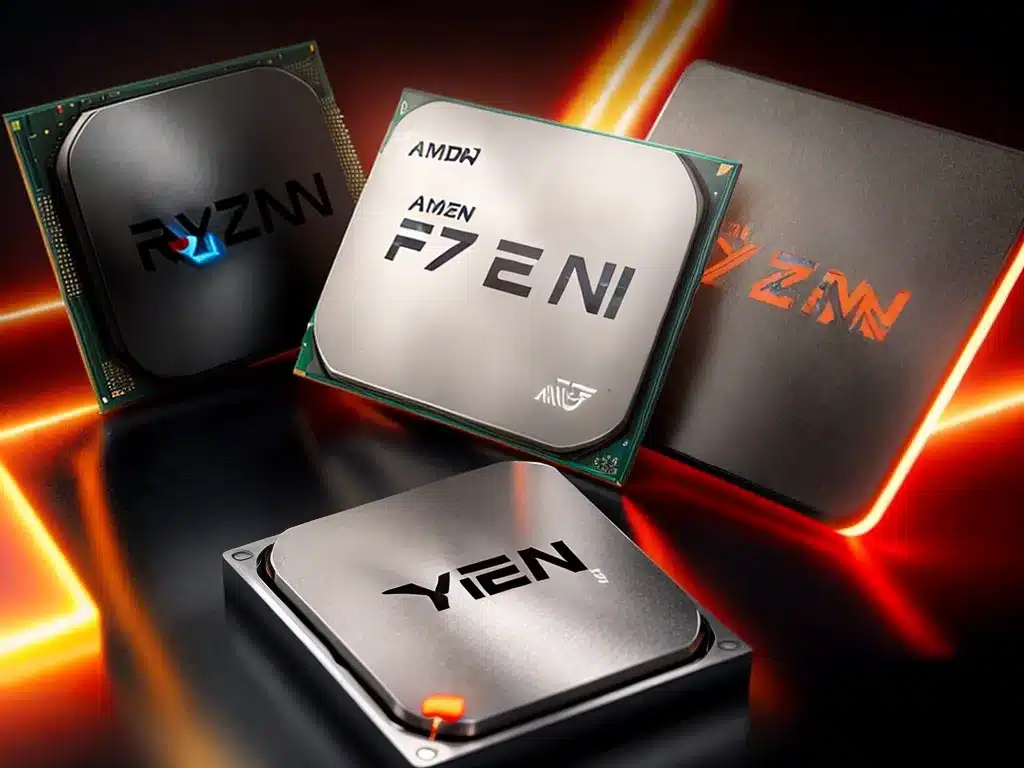AMD Promises 50% Higher Performance Per Watt With Ryzen 7000 Zen 4 CPUs
I’m excited to share the latest news about AMD’s upcoming Ryzen 7000 Zen 4 CPUs! AMD has promised some truly impressive performance gains with this next generation of Ryzen processors. As an avid PC builder and gamer, higher performance per watt is always welcome. Let’s take a deeper look at what AMD has revealed so far about these new chips.
Overview of Ryzen 7000 Series
The Ryzen 7000 series will be the first CPUs based on AMD’s brand new Zen 4 architecture. This represents a major microarchitecture overhaul from the current Zen 3 design powering the Ryzen 5000 series.
Some key highlights of what we can expect from Ryzen 7000 Zen 4:
- Built on an optimized 5nm manufacturing process for improved efficiency and higher clock speeds
- Support for DDR5 memory and PCIe 5.0 for blazing fast performance
- An integrated RDNA 2 graphics engine for powerful integrated graphics
- A new AM5 socket with a 1718-pin LGA design to enable the advanced IO
- 50% higher performance per watt compared to Zen 3, according to AMD
So in summary, Zen 4 is bringing some massive gen-on-gen improvements that will push Ryzen to new performance heights! Now let’s explore some of these key changes in more detail.
Moving to 5nm Process Technology
One of the most important upgrades with Zen 4 is the move to TSMC’s advanced 5nm process node from the 7nm process used for Zen 3. The smaller 5nm transistors enable chips to operate at higher frequencies with lower voltage.
AMD says this 5nm process allows them to achieve 50% higher performance per watt compared to Zen 3. More performance at lower power draw is always a good thing!
The smaller process node also results in a reduced die size for Zen 4 cores. AMD can fit more cores and cache into the same space, which benefits multi-threaded workloads. Or they can harvest higher quality dies with fewer defects, boosting single thread performance.
Overall, the 5nm process is a big efficiency leap over 7nm and brings significant advantages.
Supporting Cutting-Edge I/O
To enable major platform upgrades like DDR5 and PCIe 5.0 support, the Ryzen 7000 CPUs will introduce a new AM5 motherboard socket.
DDR5 memory offers nearly double the bandwidth of DDR4 while running at significantly lower voltages. This provides higher performance with lower power consumption.
Meanwhile, PCIe 5.0 doubles the bandwidth for peripherals and storage to 32 GT/s over PCIe 4.0. Next-gen SSDs and graphics cards will take advantage of this huge pipe.
The AM5 socket features a 1718-pin LGA design. This high pin count allows the increased IO lanes required for DDR5 and PCIe 5.0 support. The LGA format also enables better mounting pressure and thermal transfer from the CPU die.
Overall, the AM5 socket unlocks cutting-edge platform features to complement the performance gains from the Zen 4 architecture itself.
Integrated RDNA 2 Graphics
One unique new feature for Zen 4 is an integrated GPU based on AMD’s advanced RDNA 2 graphics architecture. This is the same technology powering the Radeon RX 6000 discrete GPUs.
Having RDNA 2 integrated graphics enables powerful capabilities:
- Hardware-accelerated ray tracing for realistic lighting and reflections in games
- Capable 1080p gaming without a discrete graphics card
- High-quality video playback with AV1 decode
- Better performance for 3D CAD, video editing, and other GPU compute workloads
For desktop users, the iGPU probably won’t replace high-end discrete graphics. But it will be a huge boon for ultraportable laptops and compact PCs where space is limited.
AMD is claiming the Zen 4 iGPU will deliver up to 2X the performance of Zen 3’s integrated Vega graphics. That’s an impressive generational jump!
Expected Performance Uplift
Based on the architectural improvements summarized above, AMD is touting greater than 15% single thread performance and greater than 35% multi-thread performance compared to Zen 3.
Those would be outstanding generation-over-generation gains, especially considering the already strong performance of Zen 3. Ryzen 7000 may well take the performance crown in both gaming and productivity benchmarks.
We’ll have to wait for independent testing to confirm these performance claims when Ryzen 7000 launches later this year. But on paper, Zen 4 is shaping up to be an extremely compelling update.
I’m thrilled to upgrade my own system once Ryzen 7000 and AM5 motherboards become available. The efficiency improvements alone make this a worthy generational update, with the promise of much faster processing across the board.
It’s an exciting time to be a PC enthusiast! AMD is pushing the envelope yet again with the Ryzen 7000 Zen 4 architecture. I can’t wait to see these chips in action.













